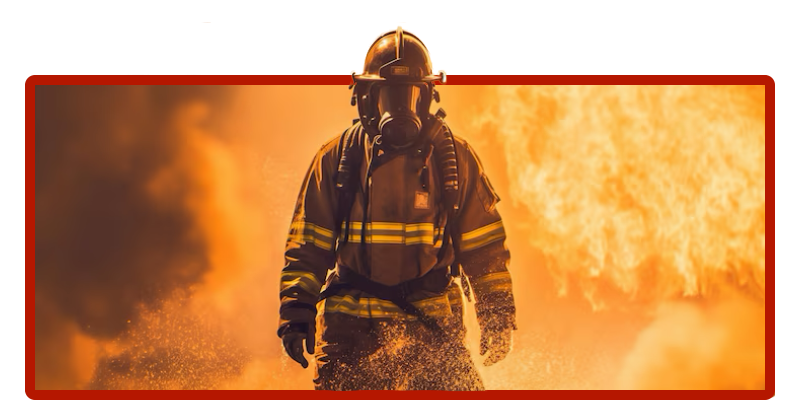
Firefighter Career Path: Training, Roles, and Growth
A career as a firefighter is far more than extinguishing fires—it’s a commitment to protecting life, property, and community. It combines physical stamina, mental strength, and a deep sense of public duty. Whether you’re inspired by the high-stakes environment of emergency response or the opportunity to become a community leader, firefighting offers a meaningful and structured career path.
This guide covers each critical phase of the firefighter journey—from education and training to job responsibilities and advancement opportunities. Firefighters can branch into specialized fields such as hazardous materials handling, urban rescue, and fire inspection, making this profession both versatile and future-ready.
The Firefighter Career Path in the United States
Becoming a firefighter is a noble but challenging path that demands rigorous physical and mental preparation.
Most candidates start by obtaining a high school diploma or GED. Next, earning an Emergency Medical Technician (EMT) certification is usually a requirement, as firefighters often act as first responders.
After EMT certification, aspiring firefighters attend a fire academy, where they undergo intensive training in fire suppression, search and rescue, hazardous material response, and survival tactics. Many fire departments also require candidates to pass background checks, written exams, and oral interviews.
Organizations like the California Joint Apprenticeship Committee (CAL-JAC) provide structured pathways that include mentorship, classroom instruction, and field training—ideal for those seeking a well-supported entry into the field.
For job seekers, platforms like Indeed, LinkedIn Jobs, and Jobber offer excellent resources for finding training programs, internships, and entry-level jobs.
Jobber
Jobber is a field service management app tailored for small businesses and freelancers, including those in emergency services.
While not a conventional job board, Jobber allows freelance firefighters or independent emergency response professionals to streamline their business operations—scheduling, billing, and client communication—all in one platform, available for Android and iOS.
LinkedIn Jobs
LinkedIn available for Android and iOS is a powerful professional networking tool where users can build a digital résumé, connect with mentors, and receive job alerts. Through LinkedIn Jobs, you can find firefighter roles nationwide, follow specific fire departments, and stay updated on openings that match your skills and certifications.
Indeed
Indeed available for Android and iOS, is one of the largest job search engines globally. It lists thousands of firefighter-related opportunities across public and private sectors.
Users can upload their resumes, set alerts for specific firefighter roles, and explore company reviews to better evaluate potential employers.
From Trainee to Lieutenant: How to Advance
Firefighting follows a clear promotional structure, which rewards skill, leadership, and continued education.
Career progression typically includes:
- Probationary Firefighter: Entry-level role focusing on practical training.
- Firefighter I/II: Certified professionals who handle routine fire and rescue duties.
- Engineer or Driver Operator: Manages and operates fire apparatus and equipment.
- Lieutenant: Oversees crew operations and emergency responses.
- Captain, Battalion Chief, Deputy Chief, and Fire Chief: Leadership roles with administrative and strategic responsibilities.
Advancement often requires additional certifications, such as Fire Officer I/II, Incident Command System (ICS) training, and leadership development programs. Some departments also prioritize candidates with a Bachelor’s degree in Fire Science, Emergency Management, or Public Administration.
For detailed advancement tips, check out resources like FireRescue1’s guide on firefighter ranks.
Specializations: Hazmat, Rescue, and More
Firefighters can expand their impact by specializing in high-demand fields:
- Hazardous Materials (Hazmat) Technician: Responds to chemical, biological, or radiological incidents.
- Urban Search and Rescue (USAR): Deploys during disasters involving collapsed structures or confined spaces.
- Wildland Firefighter: Engages in forest and brush fire suppression, often under federal or state agencies like Cal Fire.
- Fire Investigator: Conducts post-incident analysis to determine the origin and cause of fires.
- Fire Inspector or Prevention Officer: Enforces fire safety codes in buildings and workplaces.
These roles often require additional credentials from entities like FEMA, the National Fire Protection Association (NFPA), or state fire marshal offices.

Physical and Mental Requirements of the Job
Firefighting demands peak physical fitness. Most applicants must pass the Candidate Physical Ability Test (CPAT), which simulates real-world scenarios such as dragging hoses, carrying ladders, and rescuing victims.
On the psychological side, firefighters face high-stress and trauma-laden environments. Mental resilience, emotional intelligence, and access to peer support or counseling programs are vital. Departments often offer Employee Assistance Programs (EAPs) and mental health resources.
Veterans, in particular, may find firefighting to be a strong career transition thanks to overlapping values like teamwork, discipline, and crisis management.
Salary Outlook and Career Growth by Region
Firefighter salaries vary greatly depending on region, department funding, and living costs.
According to the Bureau of Labor Statistics (BLS), the median annual wage for firefighters in 2022 was $52,500, though professionals in well-funded departments or specialized roles can earn $100,000+ annually.
Highest-Paying States for Firefighters
- California – $80,990
High wildfire frequency and cost of living drive up salaries. - New Jersey – $78,890
Urban and industrial density requires skilled emergency teams. - Washington – $76,970
Balanced demand between metro and rural fire response. - New York – $72,670
Home to the FDNY, offering robust union benefits and pensions. - Nevada – $68,400
Rapid growth in cities like Las Vegas increases demand.
Mid-Range Salaries by State
- Texas – $56,540
- Florida – $54,630
- Illinois – $58,260
While pay may be modest compared to coastal states, these regions often offer lower living costs and strong union support.
Key Salary Influencers
- Rank and Seniority: Higher positions like Captain or Chief can earn 30%+ more than entry-level roles.
- Overtime and Hazard Pay: Especially relevant in wildland and disaster-prone areas.
- Union Representation: Strong unions like the IAFF advocate for better wages and benefits.
- Agency Type: Federal roles may have different compensation structures than municipal departments.
Job Growth and Future Demand
The BLS projects a 4% job growth in firefighting through 2032. Key trends driving demand include:
- Climate Change: More wildfires mean more federal and state hires.
- Urbanization: High-rise buildings and industrial expansion increase fire risks.
- Retirements: An aging workforce is creating new opportunities for recruits.
- Tech-Driven Specialization: Increased investment in emergency medicine, drone-assisted rescue, and hazmat preparedness.
For real-time job openings and salary comparisons, check:
- Indeed Firefighter Salaries
- LinkedIn Jobs (filter by location and experience level)
The firefighter career path is both challenging and deeply fulfilling. With options to grow, specialize, and lead, it offers more than a job—it offers purpose. From fire academies to the front lines, your commitment to learning and service can pave the way to a lifelong career.
Ready to take the next step? Start your search on LinkedIn Jobs or Indeed, and ignite your future in one of the most respected professions in the world.



